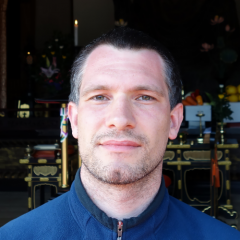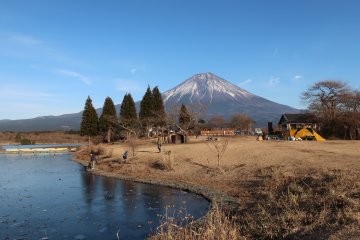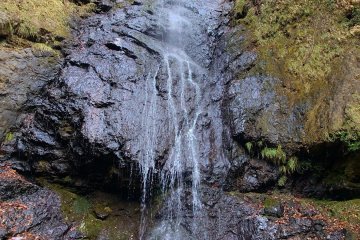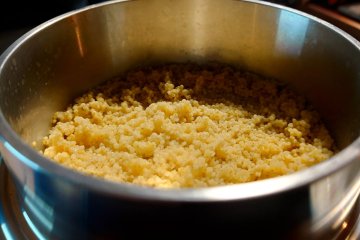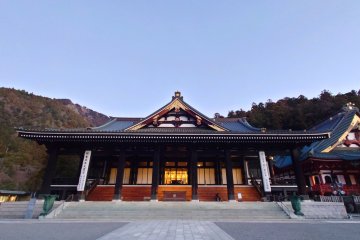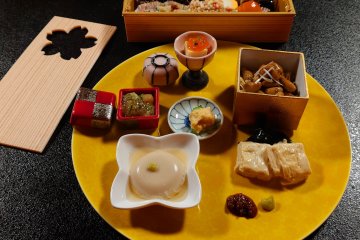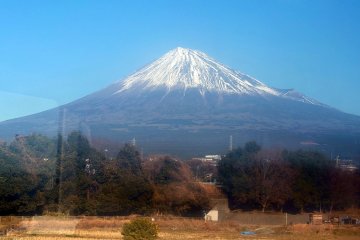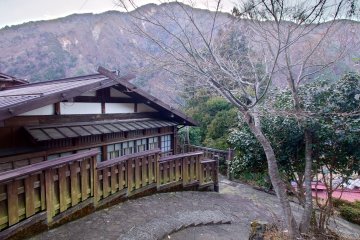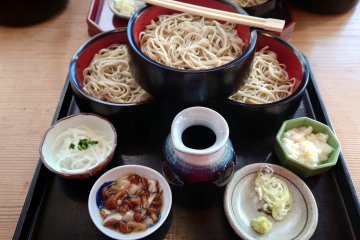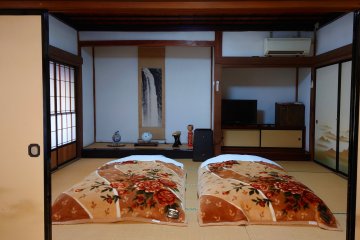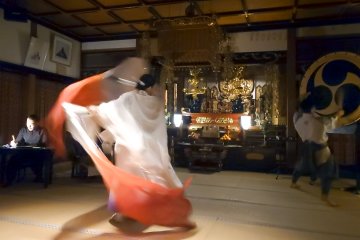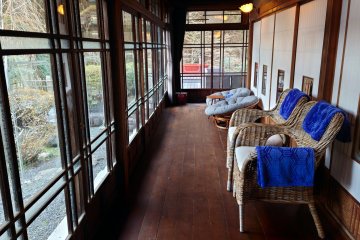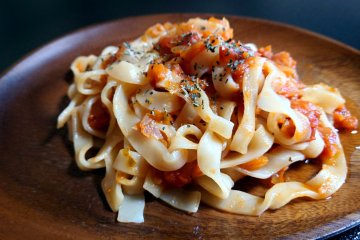Mount Minobu is a time portal! Here, life isn’t measured in years but in centuries and millennia, it’s engraved into the rocks, whispered down streams, and celebrated generation after generation. Every wrinkle on a villager’s face tells a story, and every sunrise softly echoes the Lotus Sutra. Come to breathe, savour time, think anew, and trade heartbeats with locals!
You might even already want to without realising it: that majestic Mount Fuji seen on 1,000-yen banknotes was snapped here in Yamanashi prefecture at Lake Motosu, Hokusai’s famous ukiyo-e views of Mount Fuji include “The back of Fuji from the Minobu river”, and Minobu is one of the three great Buddhist mountains of Japan.
A Unique Haven Sculpted by Nature and Time
The region is a saga chiselled in mountains, whispered by streams, and infused with the magic of a slumbering sea dragon. Imagine the tectonic plates dancing millennia ago, splitting water into the Sea of Japan and the Pacific Ocean, bridging east and west Japan, then tirelessly shaping dramatic valleys and lifting Mount Minobu 1,153 m closer to the stars, finally birthing hot springs from trapped seawater.

Steepness… a blessing? Legends say it saved the first settlers, defeated samurais of the Taira clan seeking refuge from the victorious Minamoto after the Genpei War (12th century), whose footsteps echoed through untrodden forbidding paths. Science says it favoured the playful serows and regional biodiversity (in UNESCO Minami-Alps Biosphere Reserve) allowing visitors to enjoy birdwatching and flying squirrels. Locals say it birthed the many streams gathering in the Hayakawa “Fast River” that races like a ninja, on which hydropower plants were built, powering homes and sustaining local jobs until automation took over. Cooks boast of their unique terroir with ingredients such as plump Akebono soybeans bursting with sweetness and protected by the Geographical Indication Act (50% bigger, 10% sweeter, registration #119 by the Ministry of Agriculture, Forestry and Fisheries of Japan)!

Steepness… a curse? Sushi lovers would agree as the challenge of building terraced fields here forced the ancestors of farmers to cultivate millet and buckwheat instead of rice, and to import rice as a luxurious ingredient only for New Year celebrations! As for the salt production, it is small due to limited availability rather than steepness. Would local elders curse steepness?

Inspiring Keepers of Stories Almost Beyond Reach
Driving to Mogura village is no ordinary journey; it’s like travelling through wrinkles in space and time. Interminable ascending roads like shoelaces, shouldered by cliffs, striped by sunlight and shadows of tall thin trees, tell of Earth’s power. Emerging into the sun, suddenly beholding houses up and down, is like slipping through a mirror. Being greeted by a villager popping up from nowhere reinforces this fairytale atmosphere, especially because the youngest of the 13 villagers is 65 years old…

Introductions and friendly chat quickly ensue when travellers bring a regional guide to interpret the local dialect. Scrutinising the mountains and village during anecdotes and explanations clarifies the ancient way of life and agricultural cycles from buckwheat/millet to soy/adzuki to radish/rape to wood production. What may keep you wondering in awe even back home is how those farmers and their ancestors had the strength and will to cultivate such steep terrain despite all the hardships.

While strolling, you’ll notice vegetable gardens and quinces but you’ll need a guide to unlock secrets hidden in plain sight: former fields, bee boxes (you can buy organic “100 flowers” honey), bear traps (baited with honey then eaten)… and to get invited to an old school to joyfully sip tea or amazake fermented rice, see photos, and engage in discussion with spirited grandmas and grandpas with laughter lines deeper than the Grand Canyon.

Cities will be depicted as sirens singing of school friends for the young and of hospital staff for the frail and chronically ill. Diverse tales and answers will follow: the silver-haired villagers still produce food, honey serves more as medicine than as food, the village comes to life like in Fantasia when children, grandchildren and great-grandchildren visit for New Year… and when we visited, one venerable villager surprisingly revealed that she had moved in just a year ago!

What questions would you ask these living archives of Japanese life before the Internet, Shinkansen bullet trains, and even colour TVs? What photos would you ask to see?
Timeless Stay at the Source of Nichiren Buddhism
Have you ever longed to peek into a much more ancient realm, both Japanese and universal, where scrolls hold more wisdom than smartphones? At Mount Minobu, you’ll not just peek, you’ll be immersed in Nichiren Buddhism whether you arrive for a few days/nights of temple stay, long retreat, pilgrimage, or simply slow tourism.

The founder Nichiren Great Bodhisattva retired here after clashing with the Kamakura military government in 1274, focusing on the perpetuation of his teachings and building the head temple of Nichiren Buddhism ”Kuon-ji” with his disciples (33 local temples now). This charismatic priest spread the Lotus Sutra as the sole container of the highest Buddhist truth, maintained that women can attain enlightenment (contradicting “only men” earlier teachings), and ate vegan meals cooked with ingredients received from followers in diverse provinces (including locally unavailable rice).

Serenity seekers, let the air of Mt Minobu wash away your worries, and rise before dawn to attend morning prayers at Kuon-ji. You may dream lost in a starry sky, witness a priest bend from toes to head to free the pure sound of a giant bell, follow a parade of priests, sit shoeless on a chair or tatami mat under a dragon painting, and burn incense powder with Japanese worshipers during the ceremony (photos forbidden). In winter, bring kairo feet warmers.

Beyond, you may channel your inner monk by visiting the grave of Nichiren, copying a sutra (shakyo), making a rosary with stones (juzu-zukuri), mending a broken object with gold (kintsugi) then reconsidering the value of flaws, learning the teachings of Buddha in English, or attending one of the many events (example: Setsubun gathers ±100 priests). Sadly, the dojo where Nichiren Buddhists must train for 35 days to become priests is closed to visitors, and details remain unavailable to outsiders.

Souls craving less spiritual experiences should appreciate feasts for the eyes and bellies during breakfasts, lunches and dinners, maybe accompanied by regional grape wine or sake. And in March/April, walking or riding an e-bike among shidare-zakura weeping cherry trees in full bloom will fill your heart and memories. Just remember: low voices, open minds, and a zest of adventure!



Travel Tips
Start your journey in Japan with holy Mt Fuji and Mt Minobu, maybe returning for peace after crowded Kyoto (temples) and Osaka (Expo 2025). Travellers from all faiths and atheists are welcome including men and women, LGBTQ+ travellers, individuals and couples, and tattooed visitors. Minobu is fine with a cane but not yet with a wheelchair.

History buff? Visit Akasawa village, whose inns welcomed pilgrims climbing Mt Minobu and Mt Shichimen. Taste Minobu Yuba, introduced 7 centuries ago for Nichiren by disciples caring about good nutrition and digestion. Dry yuba “tofu skin” souvenirs can be used as soup ingredients, cooked as crisps…

A fun restaurant to taste handmade soba (buckwheat noodles) is Osukuni. Just open its tower of bowls, add different plant-based toppings in each, and slurp everything!

Kakurinbo is most popular for temple stays thanks to its multilingual staff, relaxing garden gifted by Japan’s unifier Tokugawa Ieyasu, and exquisite seasonal courses of traditional dishes (vegan or not on request). Make sure to try its shojin-ryori cuisine at least once! There, you may experience miso making from Akebono soybeans, tasting of Nichiren's meals during gastronomy seminars, wine baths with private rental for couples and shy travellers, and unique performances by artists in residence.


Privacy-minded travellers can rent the former sake brewery Ebisuya Villa, renovated for modern comfort and redesigned for rejuvenating moments. Guests may savour the carbonara or vegan tomato versions of flat Hoto udon noodles (specialty of Yamanashi prefecture) at the neighbouring Zencho (Farmer's) Café.


For a playful atmosphere, travellers may stay at a school converted into a hotel, Healthy Misato. The walls are illustrated with animals, the hot spring waters are salty sulfuric, the meals are regional washoku with boar and fish, and guests can do cultural activities with the community e.g. making mochi-bana (rice balls on branches) then cooking it over a fire during a Dondo-yaki (New Year) festival.

To organise tours in English, contact the Houdini Corporation travel agency in Yamanashi prefecture. To organise a tour in French, German or Italian, contact Japan Travel's travel agency.


